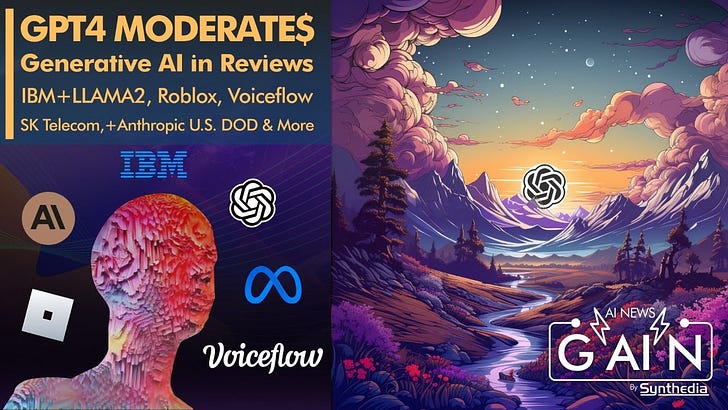How Generative AI is Used to Automate Product Placement in Online Videos
Introducing efficiency into a highly manual, high friction process
Rembrand has set out to change ad monetization for online videos. The company has assembled nine machine-learning models that automatically analyze a video and identify appropriate locations to insert either 2D or 3D digital renderings of consumer products or other promotional material.
Omar Tawakol, Rembrand’s CEO and co-founder, debuted some of the company’s latest features at Synthedia’s Generative AI Innovation Conference. He likens Rembrand to AdSense for product placement.
The solution is designed to provide marketers with easier access to placing ads inside of influencer videos at scale, while also making it easier for the influencers to sign up advertisers and insert their creative assets into the videos.
Creating a Native Video Ad Format
Product placement already exists in online videos. The problem is that it is a highly manual and inefficient process. Marketers have to spend a lot of time finding the right influencers and working with each individually to create campaigns. This takes time, consumes staff resources, and often creates the added challenge of finding sufficient audience reach across multiple influencers.
This approach also consumes a lot of time for influencers or their teams. They must source advertisers and work with them to set up contracts and negotiate how each ad will appear in each video. Beyond this, they must identify an appropriate way to integrate the ad creative assets into the produced videos.
Rembrand uses generative AI to identify these product placement locations and automatically insert the creative, saving time for the creators. It provides marketers an easy way to buy audience reach and upload creative assets. Tawakol commented:
Video is exploding. You can see that all around us… The issue that I see is that the way that we chase these audiences is that we put these annoying interruptive ads in front of them. We put pre-rolls, post roles, mid-rolls; and consumers just pretty much hate it. They will pay money to avoid those ads. They pay money for subscription services. And if you put a skip option in front of an ad, two-thirds of consumers will skip it. So why are we still doing this?
I mean search went through a transformation where it was banner ads and then it went into a native format. Why don't we have a native format for video?
Well, it turns out we do have a native format for video. It's been around for decades. It's a multi-billion dollar industry called product placement.
…
What we've been doing at rembrand is we launched something that just think of it as the equivalent of AdSense for product placement. It's the ability for you to run a virtual campaign as a marketer and say, “I want to get this product in these types of influencers,” set up your campaign and literally flight the campaign…The system takes where a placement is chosen and then it automatically inserts it with generative AI.
Automating Manual Tasks
This is an interesting use case that generative AI models and machine learning more broadly make possible. You can think of it as a cross between the use of deepfakes in Hollywood and an online marketplace.
De-aging actors and adding digital people and objects into video was once a laborious and highly manual CGI project for a VFX artist. Deepfake technology dramatically reduces the time to add these effects and generally produces higher quality. Rembrand is like deepfake technology for adding consumer products to online videos.
But efficiency in production does not address the inefficiency in matching ad buyers with video creators that have audience reach. Introducing an online marketplace to match buyers and sellers is necessary to reduce that transactional friction.
This makes Rembrand an interesting example. Generative AI is sufficient to create a new product opportunity but must be coupled with another capability to create an economic opportunity.




